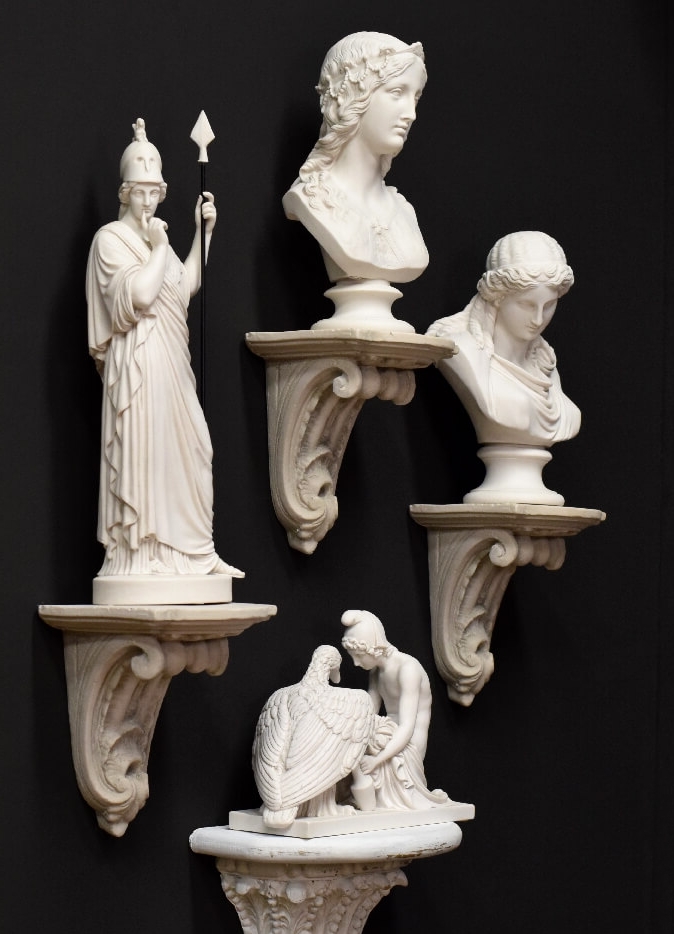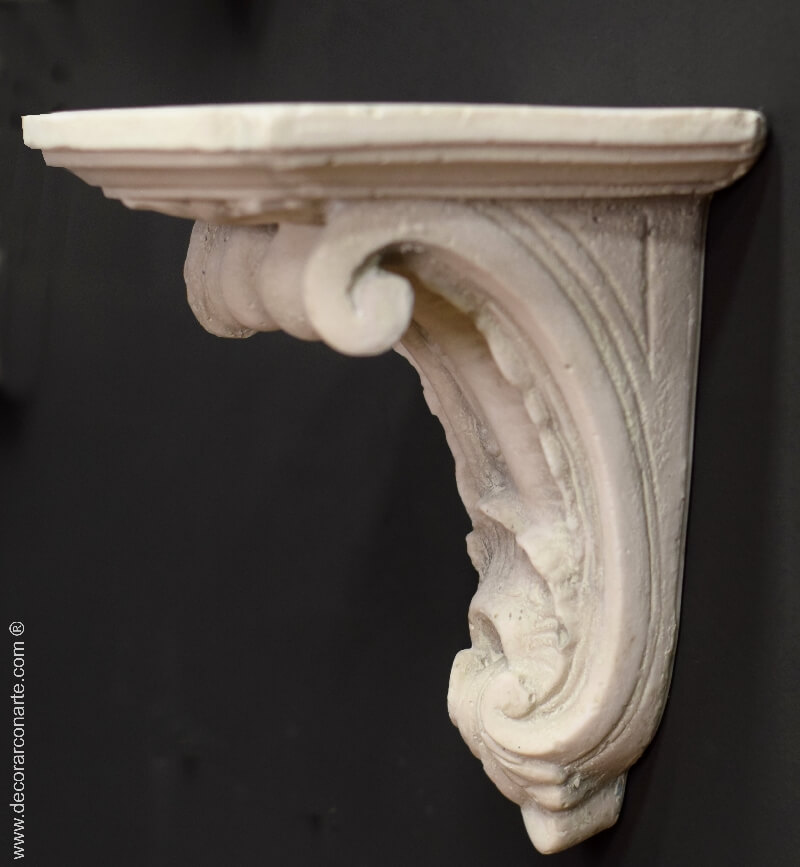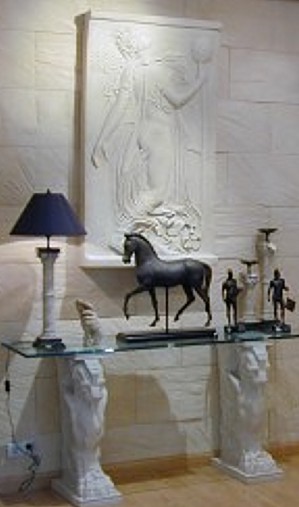Wall decoration can acquire an air of distinction if we use decorative elements inspired by classical art, such as Greco-Roman and neoclassical reliefs, combined with corbels that support small sculptures, busts or replicas of Greek ceramics, for example.
These two elements, reliefs and corbels with busts or sculptures, have been used in different cultures since antiquity for monumental and interior decoration, in temples and palaces, and in the villas and mansions of the distinguished classes.
Corbels are supports that protrude from the wall. They can be used on façades to support horizontal structures such as architraves or friezes, or as interior decorative elements, either free-standing or as a base on which a small or medium-sized decorative figure is placed. They can also be used as legs for tables or consoles attached to the wall and as supports for shelves.
Most corbels combine geometric figures, especially scrolls and spirals, with vegetal motifs, and some have human figures.
Reliefs are sculptures which are characterised by protruding from a flat surface, so that the back is not visible, and depending on their depth they are called bas-reliefs, if the relief protrudes only slightly from the flat background, and high reliefs, when they are sculpted almost like round sculptures, but are placed against a background or wall. They are therefore designed for a frontal view. Sometimes, in their composition, the sculptor plays with perspective and depth, emphasising more the objects or figures in front and barely hinting at those in the background.
The function of the reliefs in antiquity was mainly narrative, its oldest use by civilizations such as Egypt and Mesopotamia was to narrate the highlights of the rulers, especially military events, and on the other hand of a religious nature, representing gods and their myths.

These objects began to be used in interior decoration especially after the rediscovery of Greco-Roman culture during the Renaissance, and experienced another great boom from the neoclassical style in the 18th century, marked by the discovery of Pompeii and Herculaneum. In the 19th century, the Empire style spread other styles in Europe in addition to classicism, starting with Egyptomania, which was born of the Napoleonic campaigns in Egypt, and which filled the mansions of aristocrats and the gentry with objects of Egyptian origin or inspiration, for example, reliefs plundered from tombs.
Nineteenth-century eclecticism and historicism turned its gaze to the exotic, with inspirations from the Far East and Islamic art.

Nowadays, in interior decoration we can harmonise the modern and the ancient by combining contemporary minimalist furniture with neoclassical or Greco-Roman reliefs on the wall and corbels highlighting small statues of classical inspiration.
Today’s reproductions of archaeological figures in materials such as reconstituted marble or fibreglass remain faithful to the original models, and their stone or marble-like textures make them ideal for adding an elegant touch to the decoration of our favourite spaces, those special places in our home where the art that surrounds us can serve as inspiration and a source of serenity and relaxation.







